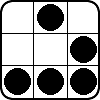I feel like I need to defend myself a little bit, I am a professional graphics programmer and I've written renderers on Xbox 360 and Wii-U, along with my own side project that can render in DirectX9/11/OpenGL 3.x. I've written a multi-threaded renderer before and already have an idea on how I plan to tackle the new APIs. My initial worry was that in order to get a minimally viable renderer may be extremely painful since my multi-threaded renderer will need to be restructured to create it's own threads. Luckily it already does something along the lines of PSOs since the game logic is sending it's own render commands, I should be able to encapsulate them well enough.
Big concerns for me, (and these are initial thoughts from a GDC presentation on DX12) are:
- Memory residency management. The presenters were talking along the lines of the developers being responsible for loading/unloading graphics resources from VRAM to System Memory whenever the loads are getting too high. This should be an edge case but it's still an entirely new engine feature.
- Secondary threads for resource loading/shader compilation. This is actually a really good thing that I'm excited for, but it does mean I need to change my render thread to start issuing new jobs and maintaining. It's necessary, and for the better good, but another task nonetheless.
- Root Signatures/Shader Constant management
Again really exciting stuff, but seems like a huge potential for issues, not to mention the engine now has to be acutely aware of how frequently the constants are changed and then map them appropriately.
@Promit: Thanks for the insight, that makes me feel better about the potential gains to be made and helps to assuage my fears that adding my own abstractions between the game thread and the render thread won't defeat the purpose of the API.
@Hodgman: I'm actually writing a new engine for the express purpose of supporting the new APIs, and my previous engine also had stateless rendering. (Kinda, the game thread would just append unique commands for whatever states it wanted and those commands would be filtered by a cache before being dispatched to the rendering thread, with the new threading changes I'll likely abandon this approach so that I can add rendering commands from any thread.) I do like your idea of having specific render passes, that would allow me to reuse render commands for shadowing vs shading passes and I'll be able to better generate my command lists/bundles.
I'll also be adding in architecture for Compute Shaders for the first time, so I'm worried that I might be biting off too much at once.








